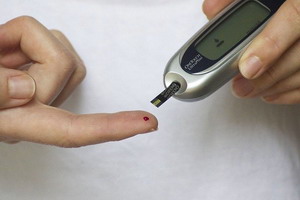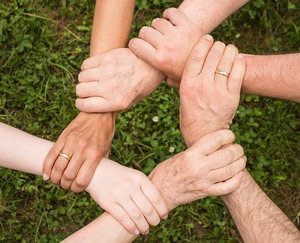
A little over a hundred years ago a hormone was isolated from the brain that was found to cause contractions of the uterus for promoting the birthing process. Because of this function it was given the name oxytocin, from the Greek for “swift childbirth.” About 50 years later a way was found to synthesize this hormone and it became the drug Pitocin, which was injected into women starting labor to induce stronger contractions to speed the birthing process along. It is also used to stimulate milk production in the new mother. Eventually it was used to induce labor on schedule instead of the doctor having to wait around until the woman’s body decided it was ready to give birth. That was pretty much the story until 1990 when a fellow researching field mice (voles) discovered that oxytocin played a significant role in mate bonding and social connection with the mice. This is when oxytocin became known as the Love Hormone. Since then research into this hormone has exploded. In 1990 there were only 17 research papers on oxytocin. Now a PubMed search shows over 28,000 citations for oxytocin. There just was not much interest when oxytocin was just a hormone for inducing labor, but for the Love Hormone there is a ton of interest.

It seems the more they research this hormone, the more things it seems to do. I got pushed into interest in this molecule earlier this week after doing some research on fasting and discovering that oxytocin was responsible for converting white fat into brown fat. Why would anyone care about that? Lets ask how many people are interested in weight loss? Brown fat is the highly metabolically active type of fat cell that burns fat to heat up the body. In a lean person, when they eat a meal with more calories than they can use, it is the brown fat that burns up the excess instead of storing it as white fat for later. We have known for some time that exposure to extreme cold triggers the conversion of white fat into brown fat to help us survive nasty winters in the polar climates. It appears that it is oxytocin that is the hormone that signals this conversion.

This tickles an interesting observation of mine that may or may not be true. It has been my observation in myself and others, that loosing weight is much easier when you are falling in love. I had always believed that this was due to increased catecholamines (stimulating neurotransmitters) in the brain caused by the excitement of falling in love ramping up metabolism. I still believe this may be true, but now we have another possible player – the Love Hormone could be burning up fat by converting white fat cells into brown ones. The flip side is even more interesting. What if weight gain is promoted by not being in love? What if weight gain is a body response to feelings of separation and isolation? This oxytocin connection sounds a lot like the message in the book by Geneen Roth, “When Food is Love.” It is just a thought to play around with as it seems to fit the current understanding of the oxytocin hormone.


This weight loss connection to oxytocin has been studied, and the conclusion is that oxytocin does indeed combat obesity and metabolic dysfunction. More than that, oxytocin regulates the insulin sensitivity of the cells. Giving oxytocin reduces insulin levels and reverses metabolic insulin resistance – the so called metabolic syndrome. Just to make this whole story even more amazing, oxytocin reverses fatty liver disease. Additionally oxytocin not only turns white fat cells into brown ones, but it triggers thermogenisis (heat production) in not only the brown fat cells, but in skeletal muscle as well. A point to be aware of I found in my research is that this process requires vitamin C as a cofactor. So if you are deficient in vitamin C, you will not see this white fat conversion taking place.
The more they study oxytocin, the more they discover. Initially it was believed to only be manufactured in the hypothalamus and excreted by the pituitary gland. Now they have discovered that it is made by lots of tissues in the body, like the ovaries, testes, eyes, adrenals, pancreas, thymus, and placenta. At the same time they are discovering more things that oxytocin impacts. The initial belief that it increases bonding between people is not quite true, as it will increase bonding within your perceived group, but will actually increase avoidance and suspicion of those outside your group. One current theory is that oxytocin increases awareness of social interaction cues and modulates fear and anxiety. Toward this end it is being used with autistic kids to help them learn to respond better to social cues – something they seriously lack.

Within your social group oxytocin appears to promote more generosity, trust, empathy, romantic attachment, monogamy, and decrease depression. In these studies oxytocin was administered as a nasal spray. Being a small protein molecule, it does not survive the stomach, so it has to be absorbed through the lining of the mouth or sinuses, or be injected. Generally this spray is a prescription medication, but it can be found online from various places. The dose is usually 10 to 15 iu and needs to be used several times a day as it breaks down very quickly in the body. A popular scam is to sell it as a cologne to make you more attractive to others, but there is no evidence that oxytocin acts as a pheromone. It makes you more attracted to others, not them to you. Taking oxytocin may make you more socially responsive, empathetic, and less anxious, which could improve your desirability however.
So all in all oxytocin appears to be a really good thing most of the time when you are around folks you identify with. When you are around strangers however, it might not be a good choice as it could make you even more rejecting and avoidant.

I have been saving the most important discovery for last. Oxytocin regulates and turns down the production of ACTH and cortisol. What does that mean to you? It means it turns down the stress response in your body. This is a Holy Grail! So much of our ill health comes directly from our stress levels. A good stress response is healthful and useful in the immediate short run. Adrenaline pumps us up to be able to make the extra effort to meet survival demands, and the extra cortisol that is released with it is our internal cortisone cream to treating injuries. The problem is chronic stress – the stuff we have been facing for so many months lately. What is helpful for a few minutes in an acute stress situation, destroys our body over time. It burns us out. Oxytocin puts the brake on excess adrenaline and cortisol production. This is a good thing. It is like love turning down fear.

With that in mind, it is easy to relate to why certain activities promote oxytocin production in our bodies. The obvious activities include cuddling and love making. When a baby nurses it releases oxytocin in the mother. Petting and snuggling your dog or cat increases oxytocin release. Certain meditational and yoga practices are good. Music you love, especially if you sing along with others pumps up oxytocin. Getting or giving a massage releases oxytocin. I suspect the same is true for Chiropractic visits. Hanging out with friends and telling someone how much you care for them stimulates the release of oxytocin. Cook and eat with someone you care about. Increase your quota of hugs per day. All kinds of nurturing and caring activities promote oxytocin release and the positive health benefits that come with it.

In these times of social distancing and face masks taking away our connection to others, we are making ourselves sick from lack of connection and love in our lives. We have to really take the extra effort required right now to reach out and connect in any way we can. Loneliness can quite literally kill us. We understand this on a feeling level, but now you can see some actual physiology behind this. Connection directly impacts our health.
Take care,
David
